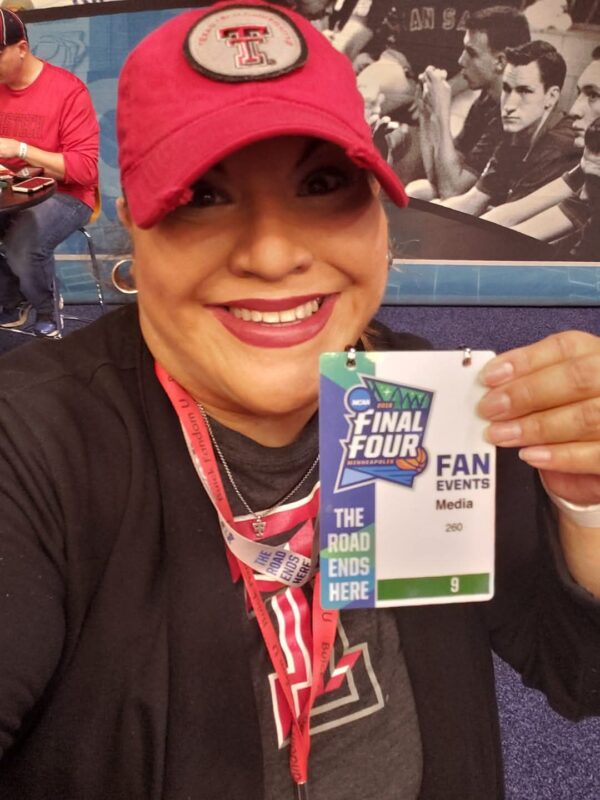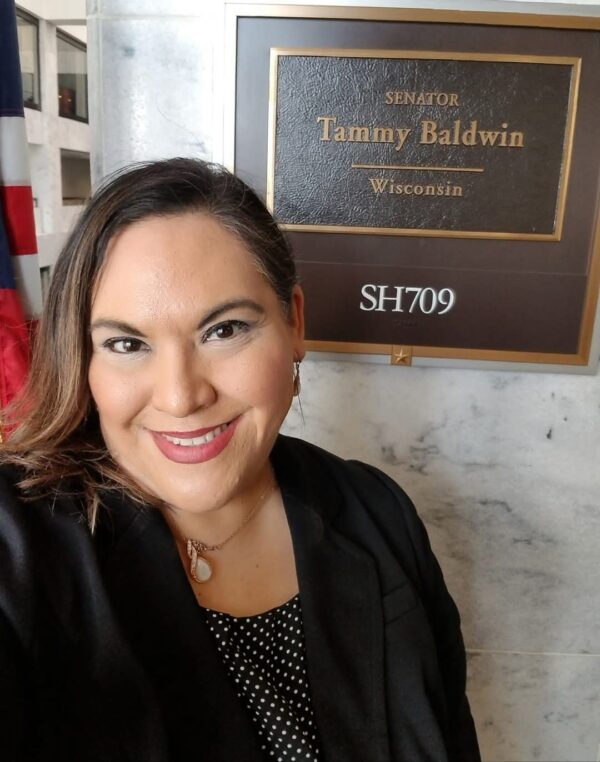STRENGTH IN EVERY STORY™
Balancing the Homefront: Military Wife, Mother, Career, Migraine Advocate
JPs Story, August 2024
*As told by: Katy Oakley
Diagnosis received: Migraine with aura
Symptoms: Loss of vision in the left eye, Floaters, Other visual disturbances, Head pain, Nausea, Delayed motor control, Sensitivity to noise
At just 10 years old, JP was diagnosed with migraine with aura. Little did she know this would be the start of a lifelong battle with chronic migraine disease.

For years, JP’s headache attacks were manageable. But in 2012, at age 35, everything changed. “I woke up not being able to walk. I could barely talk. My head was hurting so bad. I had no motor skills,” she remembered.
JP was rushed to the ER, where doctors determined she was experiencing chronic, debilitating headache attacks. This would be the first of many visits to the ER until she was finally diagnosed with chronic migraine a few months later.
The diagnosis was devastating. “That began the journey of me finding out that I had chronic migraine, which I was baffled because, and again, I tell people this is how uneducated I was in 2012. I didn’t know there were different classifications of migraine,” JP said. “I thought there was just migraine and migraine with aura...”
In her 20s, as a military spouse, JP quickly became familiar with the realities of deployments, sacrifice, and holding down the fort. For years, migraine was a deeply personal struggle she rarely spoke about.
As their relationship grew, so did their family. Through it all, migraine remained constant. While her ex-husband was deployed, she often faced the dual challenges of managing the household and parenting, often while enduring debilitating pain. “…being the supportive spouse whenever he deployed, I was left to care for [the] kids. At first it was a kid and then [it] became kids. During that time, it was a huge struggle,” recalled JP.
“Going through that time in my life… having to navigate… working a full-time job, having him deployed, and trying to find the balance in how I’m able to do everything [was challenging]. But again, I supported him from day one. I knew that he wanted to continue being a part of the Unted States Air Force and I come from a military family so, I was 100% OK with it,” she admitted.
Among her most disruptive symptoms were visual disturbances that made simple tasks challenging. The attacks made it difficult to function, especially when she was home alone with her children during her ex-husband’s deployments.
The fear wasn’t just about enduring the pain, it was about how to take care of herself, let alone a child, when she couldn’t see clearly or even stand without feeling off-balance. “From the time I was 10, till now, vision has become one of the bigger symptoms that has really altered a lot of things that I do,” she said.
Still, JP found ways to prepare. With each deployment, she worked out a plan and went to the extent of finding ways like knowing her way around her own home to push through the worst of her attacks. “I had to train myself how to find the freezer…get the ice packs, find my medications, all while blindfolded. I learned how to get myself injections as a teen blindfolded because again, when I get visual disturbances… I’m completely blind, I can’t see anything. I never know how long it’s going to last.”
However, as these attacks occurred, JP felt she was failing as a single parent. “I felt so defeated. I always wanted to take care of my children [in] the best way possible. My kids are relying on me. I’m the only parent they have around, so [I went asking myself,] ‘how can I be that supportive parent?’”
Despite her fears, the experience also became a teaching moment for her children. “As worried as I was about what this was going to do to my children… them watching me [go through these attacks], it taught them that there’s some situations we cannot control and [instead, need] to be empathetic,” she said.
With this reality, JP and her family often had to improvise, adjusting plans when she was unable to manage her symptoms. “One thing I wanted my kids to know is we may not be able to make a certain event… but I will do everything in my power to make it up [to them]…”
Over time, her children developed a deep sense of empathy. “My kids… they’re so empathetic, they’re understanding because they knew that there were times when we had to make last minute changes or we could go to the event but have to leave early… they know that I will do everything [I can] to do the ‘redo.’”
What made it all possible was their unity. “… having a household where we all work together [made all the difference]. Being in the military, I know that a lot of families have to join together to be that backbone. We have to be supportive, we have to keep going.”
JP added that deployments, both planned and unexpected, forced her to constantly evaluate how to maintain stability at home. “Some of those deployments are unexpected, but some are planned… it kind of goes hand in hand with trying to have [and find] that right balance. [As well as knowing] how to keep the household going, how to keep everyone being a family [and] keep[ing] the family intact and not let health issues impact you in a way that’s going to change the dynamics because family is so important.”
Over the next few years, JP’s health continued to decline. She lost her 13-year banking career due to her symptoms. “I almost lost myself in the process because that was a huge impact, not just on me but [on] my family,” she said.
Just six months after JP’s diagnosis, her son was also diagnosed with chronic and abdominal migraine. “Now you have two people who are very debilitated,” she explained. The family struggled to find the right accommodations and treatments for both JP and her son.
“We went through four neurologists for him. So, it was a huge, like I said, between me fighting for my health to get better and [also] for his, it was very draining,” JP shared.
Through it all, JP refused to give up. In 2014, she discovered advocacy for headache disorders and found her true calling. “This is my purpose in life…This is what I’m meant to do,” she realized.
JP began volunteering with organizations like the National Headache Foundation, determined to raise awareness and fight for better care. “I volunteered, got involved with organizations like the National Headache Foundation. I volunteered for the Global Healthy Living Foundation as well,” she said.
 Even as JP’s health challenges continued – including developing rheumatoid arthritis and experiencing heart failure and a heart attack – her passion for advocacy never wavered. “I’m always doing something [and] talking with other patients as part of my job, so I’ll talk with the patients and, again, trying to find how they can fit in into my organization with advocacy,” she explained.
Even as JP’s health challenges continued – including developing rheumatoid arthritis and experiencing heart failure and a heart attack – her passion for advocacy never wavered. “I’m always doing something [and] talking with other patients as part of my job, so I’ll talk with the patients and, again, trying to find how they can fit in into my organization with advocacy,” she explained.
Today, JP is thriving in her role as a Patient Advocate, Community Outreach Manager with the Global Healthy Living Foundation, and she’s seen remarkable progress in her son’s health as well. “He moved to Texas with me…and his headache attacks have lessened as well,” she shared. “He works full time. He’s had a full-time job actually since July of 2021…Sometimes he works double shifts just because he wants to be that good [of an] employee. He wants to show his potential. “
Through it all, JP has maintained an unwavering sense of hope. “Even if I wake up feeling terrible, I still have hope because I woke up,” she said. Looking back on her journey, she reflects on what she wishes she had known earlier. “The biggest message I would tell myself looking back is [to] be open, be honest because you don’t know what direction your health is going to go,” JP shared.
For years, she hesitated to speak openly about her condition. “My biggest thing was, I was scared that people were see it as a weakness,” she paused. “[Instead] think of it as a strength… it’s a strength because you have to be strong to live with this condition.”
JP’s story is a testament to the power of perseverance in the face of adversity. Her journey has been filled with hardship, but also with the determination to make a difference. Now, she’s looking forward to a future where others living with chronic migraine disease can find the same hope and support that has carried her through.
*Disclaimer: This real story was drafted with AI assistance and reviewed for accuracy by the National Headache Foundation.
